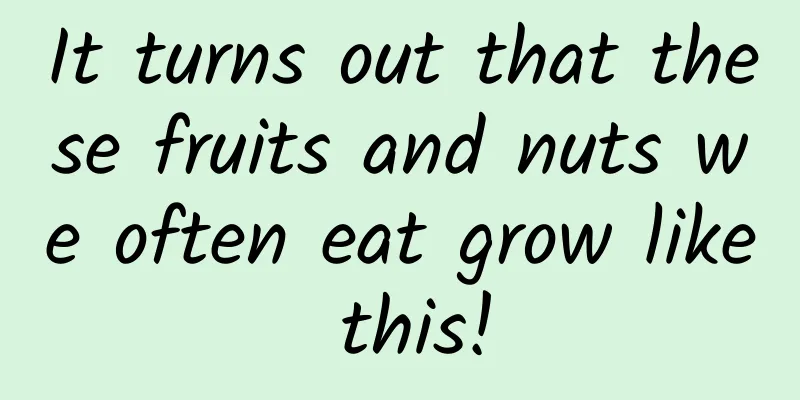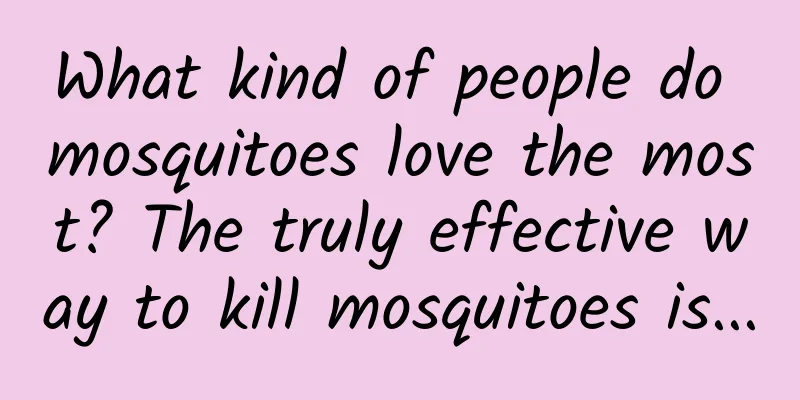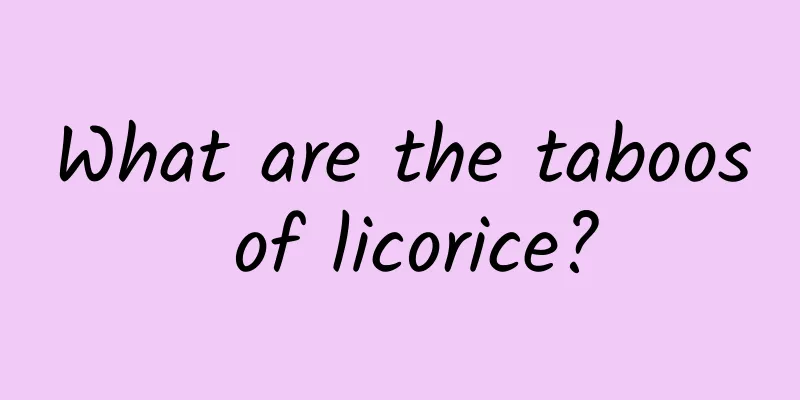It turns out that these fruits and nuts we often eat grow like this!

|
In our daily lives, we eat a lot of fruits and nuts. We may know how grapes grow, and what pear trees look like, but you may not imagine how almonds, cashews, and blueberries grow. Let's take a look at how they grow! Let’s look at the fruit first. This beautiful sea of red is what cranberries look like when they are harvested. From the end of October to the beginning of November every year is the cranberry harvest season. Cranberries are a magical fruit that grows in the wetlands of North America. Because they grow close to the soil, they are not easy to pick, so clever farmers take advantage of the property of cranberries that they will float when they come into contact with water. They fill the farmland with water to make the cranberries float, thus forming the beautiful Red Sea that we see. Isn’t it magical? Cranberries floating on the water. Copyright image, no permission to reprint What is this? Do you recognize it? From a distance, it looks a bit like hawthorn, but the color is a little different. What is this? This fruit is actually blueberry. Blueberries are blue in appearance, look very beautiful, and taste very good. They are loved by everyone. Blueberries belong to the Ericaceae family. Unlike strawberries, blueberries do not grow along the ground. They grow on trees, just like grapes and hawthorns, hanging in bunches on the trees. They look very beautiful! Copyright image, no permission to reprint As a fruit from the southern tropical region, papaya requires strong photosynthesis to grow. In fact, it is named papaya because it grows directly from the wood, and the papayas bear fruit at the top of the tree, which looks like an umbrella, densely packed and spectacular! Copyright image, no permission to reprint Look at this strange-looking thing hanging on the tree. Can you recognize it at a glance? Yes, it is durian. Durian is a purely tropical crop. It needs a high temperature climate all year round to grow and bear fruit. Durian is as big as a football, with a rough and uneven skin. It is surprising that many small branches can bear such weight. Copyright image, no permission to reprint After looking at fruits, let’s look at nuts~ Does this little tail look familiar? It is the cashew nut. You can't imagine it, right? Cashew nut is one of the four famous dried fruits in the world. It actually grows on trees. The fruit of the cashew tree is divided into two parts, the nut and the pear, also known as the true fruit and the false fruit. The kernel inside the true fruit is actually the cashew nut we often eat, which grows on the top of the false fruit. The kernel usually has a hard shell outside. The kernel is blue-gray in color. Because it looks like a chicken kidney, it is also called chicken cashew nut. Copyright image, no permission to reprint The false fruit is a fleshy fruit formed by the receptacle, which looks a bit like a pear, and is oval or flat, so it is called a fruit pear. This fruit is bright red or orange-yellow in color when ripe, and has a high water content. It is one of the fruits that cools down the summer heat in tropical areas. Copyright image, no permission to reprint Look here, this is almond, a popular nut grown all over the world, a nutrient-dense and healthy snack. Copyright image, no permission to reprint Many people confuse almonds with almonds, but in fact, almonds and almonds are two different nuts. Almonds are the kernel of almonds, and almonds are the kernel of apricots. Almonds and apricots are botanically different plants. Badan is the name of Xinjiang Uygur language. my country's Badan is mainly in Xinjiang. It was introduced from ancient Persia, now Iran, and has been planted in Xinjiang for more than 1,000 years. It is recorded in the Tang Dynasty: Piantao comes from Persia, and Persia calls it Podan tree. It is five or six feet long, four or five feet around, with leaves like peaches but larger, and blooms in March, white. The flowers fall and bear fruit, which is shaped like peaches, but the shape is biased, so it is called Piantao. Its meat is astringent and cannot be eaten, and the kernel in the core is sweet. It is treasured by all the countries in the Western Regions. Yes, you are not mistaken, Badan does grow on trees. Look, this is its growth environment, haha, you can't imagine it, this is Badan, it is wrapped with a layer of flesh on the outside, and the peel will explode when it is ripe, and the kernel inside is the dried fruit Badan. Image from the author Image from the author What is this? It is covered with thorns. Can you eat it? You read it right. This is the chestnut we often eat. Chestnut is known as the "king of dried fruits". It is unimaginable that chestnuts are wrapped in a layer of thorns. In fact, chestnuts are a small thorn ball during the growth period. They are all thorns and round. They look very interesting, but they are basically untouchable. Otherwise, your hands will be full of various small thorns. Moreover, when the chestnuts are ripe, if they are not picked in time, they will open their mouths like pomegranates and leak out the plump fruits inside. Don't say it, such chestnuts are really unrecognizable and give people a cute feeling. Copyright image, no permission to reprint Written by: Lao Ke Kai Brain Hole Produced by: Science Popularization China-Creation Cultivation Program |
<<: Will you gain weight easily if you wear light clothes when it’s cold?
>>: Can fried oil really not be reused multiple times? The answer is not what people think
Recommend
The pilot's last patron saint - ejection life-saving system
The movie "Lord of the Skies" depicts t...
What are the effects and functions of Qinjiao?
The main function of Qinjiao is to remove moistur...
Chinese scientists have made a breakthrough! Solar cells that look like paper are here
Ultra-thin, bendable solar cells are here! Chines...
The efficacy and function of water sedge
Modern medical research believes that water sedge...
Appendix, wisdom teeth, coccyx...Why do humans always have some strange evolutionary remnants?
© Getty Images Leviathan Press: It's said tha...
What are the medicinal values of gray douba
Maybe everyone has never heard of Huidouba. It is...
From a trickle to a torrent, you only have tens of seconds to escape!
Recently, two hikers in Taizhou, Zhejiang were un...
Why can't you always catch flies?
Today, we are going to talk about a little creatu...
Why are mammals attracted to bad body odors, but humans the opposite?
Friends who keep pets should have discovered that...
The efficacy and function of summer
Xiatianwu is a very common Chinese medicinal mate...
Immersive strawberry picking is a big hit during the Spring Festival! Check out this guide to avoid pitfalls
The Spring Festival is approaching, and it is a g...
Ministry of Culture and Tourism: 79.61 million domestic tourists traveled during the Dragon Boat Festival holiday in 2022, and domestic tourism revenue reached 25.82 billion yuan
According to calculations by the Ministry of Cult...
Beijing issues waterlogging warning, these four areas are at risk of waterlogging! How to prevent and avoid risks scientifically?
The Beijing Water Authority and the Beijing Meteo...
Can wolfberry be eaten frequently?
Speaking of wolfberry, I believe many people are ...









